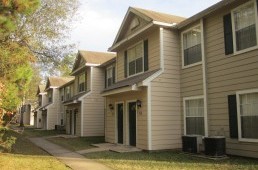
December 14, 2017 | by Katie Claflin
Categories: Affordable Housing, Rental Housing
Rental housing affordability continues to get worse. These are the general findings of two high profile reports we’ve covered in past On the House entries (click here and here to read them).
A new Freddie Mac study confirms the findings of these reports, but the scope and methodology of this study are a little different.
Instead of analyzing housing costs and incomes using national census data, the Freddie Mac study focuses only on a sample of housing units financed twice by Freddie Mac Multifamily, first in 2010 and again in 2016. The study includes the nine states, including Texas, where Freddie Mac financed the most rental units twice during this time period.
Measuring the affordability of the same apartments over the span of six years can provide both Freddie Mac and policy makers with a unique picture of what is happening to the affordability of individual units.
The Freddie Mac report confirms that, while affordability is decreasing among all income levels, it’s the very low-income households who are feeling it the most. In 2010, 11.2% of units were affordable to very low-income households (defined as those earning up to 50% of the area median family income (AMFI)). By 2016, the percentage of units affordable to those same households had plummeted to 4.3%.
The percentage of units affordable to low-income households (those earning between 50% and 80% AMFI) and median income households (those earning between 80% and 100% AMFI) also declined. In 2010, 82.5% of units were affordable to low income households, but by 2016 the percentage had dropped to 69.5%.
In 2010, 95.8% of units financed by Freddie Mae Multifamily were affordable to median income households. Compare this to 2016 in which the percentage of units affordable to median income households had decreased to 90.6%. In other words, the percentage of units that are unaffordable to median income households more than doubled –from 4.2% to 9.4%--between 2010 and 2016.
Below are two additional takeaways that focus specifically on the Freddie Mac Multifamily units financed in Texas:
Click here to read the full report, including some additional analysis by Freddie Mac.
On the House blog posts are meant to provide general information on various housing-related issues, research and programs. We are not liable for any errors or inaccuracies in the information provided by blog sources. Furthermore, this blog is not legal advice and should not be used as a substitute for legal advice from a licensed professional attorney.
TSAHC reviews all blog comments before they are posted to ensure a positive experience for our online community. Off-topic comments; hostile, derogatory or deliberately insulting comments; and comments specifically promoting goods and services will not be posted.
Approved comments will be published in their entirety. Personal information will not be removed unless it pertains to someone other than the person submitting the comment. For more information, please see our Comment Posting Guidelines.
To remove a previously submitted and published comment, please contact Anna Orendain at [email protected].
If you have a question regarding any of TSAHC's programs, please contact us.
